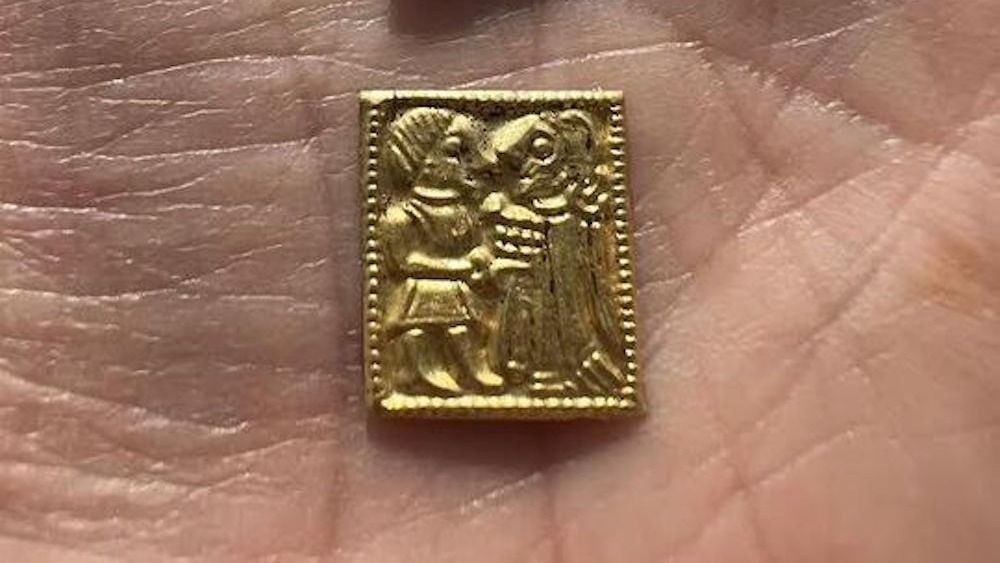In a remarkable archaeological discovery, researchers in Norway have uncovered a collection of 1,400-year-old gold-foil figures at the site of an ancient pagan temple. These miniature artifacts offer a rare glimpse into Norse religious practices during the Merovingian period and reveal significant insights into the region’s historical and cultural heritage. The discovery not only highlights the intricate artistry of early Norse society but also sheds light on the ceremonial practices of the time.
Discovery of Gold-Foil Figures

Archaeologists have recently unearthed 35 small gold-foil figures from the remnants of a former pagan temple in Hov, a village located in southern Norway. These delicate artifacts, each no larger than a fingernail, feature intricate etched motifs of Norse deities, including the god Frøy and the goddess Gerd. The figures date back to the Merovingian period, which spans from 550 AD to the Viking Age.
The gold foils are remarkably thin, comparable to a piece of paper, and are believed to have been used as sacrificial offerings rather than jewelry, as they lack any holes for attachment. This discovery adds to the historical context of Norse pagan rituals and practices.
Historical Context and Previous Finds

The first known gold foils, discovered in Scandinavia in 1725, were dubbed “gullglubber” or “golden old men.” This term reflects the historical fascination with these artifacts. Archaeologist Kathrine Stene, who led the excavation this summer, described the find as “very special” due to the small size and intricate detail of each foil.
Previous excavations at the site, which began in 1993, initially revealed two gold foils. Subsequent excavations in the 2000s uncovered an additional 28 pieces. While similar artifacts have been found in other Scandinavian regions, including Denmark and Sweden, this is the first instance of such a large collection being discovered within a smaller structure.
Unexpected Findings and Interpretation

Several of the gold foils were found inside postholes that once held support beams for the building, while others were located where the structure’s walls had been. This layout suggests that the foils were not used as admission tokens, but rather as sacrificial offerings placed during the temple’s construction to ensure its prosperity.
Ingunn Marit Røstad, an archaeologist at the Museum of Cultural History in Oslo, noted that similar gold foils continue to be discovered through both excavations and metal detecting. This indicates the potential for further finds in Norway and surrounding areas.
Conclusion
The discovery of these 1,400-year-old gold-foil figures provides a valuable insight into Norse religious practices and the cultural significance of pagan temples during the Merovingian period. The intricate artistry of the foils and their strategic placement within the temple’s structure offer a fascinating glimpse into ancient Norse rituals and beliefs. As ongoing research continues to unravel the mysteries of these artifacts, they will undoubtedly contribute to a deeper understanding of Norse history and culture.
